
 |
|
| |||||||||||
|
The 2015 San Francisco Silent Film Festival
America's best event for seeing early film is the San Francisco Silent Film
Festival. Presented in the Castro Theater, an old movie
palace, the event features the best surviving prints of classic
movies (a majority of which are not available on home video), live
music from some of the best musicians around, and even the premier
of recently restored movies. It's just nirvana for silent film
buffs, and to make it even better this year the festival expanded to
a five-day program.
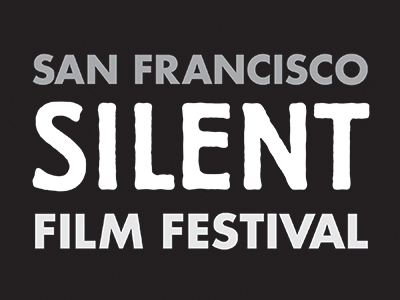 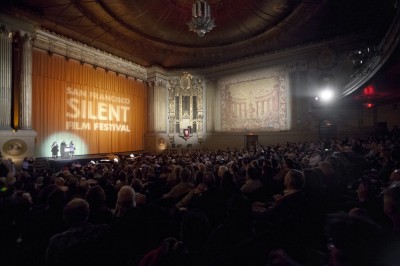 With 24 movies and short, at least 19 musical groups and notable presenters, and three special presentations, there is just too much content to cover everything. Just looking at the programs can be a bit overwhelming. And that's why this is such an amazing festival: there is an incredibly wide range of content. From well know classics to obscure foreign films to Hollywood films that have just been forgotten over the years there's something for everyone. I won't go through every program, but hit the highlights, of which there are many. Some of the Hollywood classics of silent cinema were screened this year, and it's great to see them on the big screen after first becoming exposed to them via TCM or a DVD. The festival opened with the silent version of All Quite on the Western Front, which is an amazing film even without the dialog. There weren't many changes to the movie (I noticed one scene that was mainly dialog was omitted) and even without sound it is a very powerful film. (The Mont Alto Motion Picture Orchestra came up with a fantastic score that included a lot of sound effects, which added a lot to the experience.) 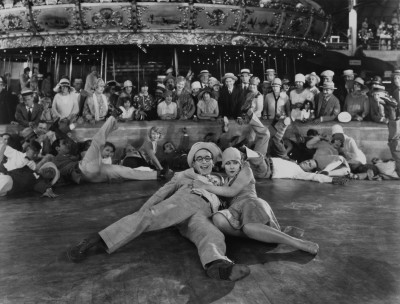 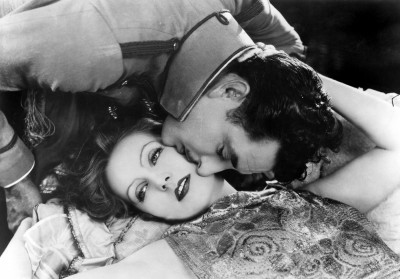 Other big name films that were shown include Harold Lloyd's Speedy (which is hilarious), Flesh and the Devil with Greta Garbo and John Gilbert (the film where the two famous lovers met), and Ben Hur (1925) the early epic staring Ramon Navarro and directed by Fred Niblo. Then there were the more obscure American offerings. Colleen Moore was a very big name in the 1920's, but unfortunately only a few of her films have survived so she's largely unknown. Her 1929 feature, Why Be Good? is excellent. It's the story of a working class flapper who likes to dance but is actually "good" when it comes to men. One evening she meets a charming man who just happens to be the son of the owner of the department store where she works. The fact that they are from different sides of the track make their romance difficult. The man's father is worried that Colleen is using her feminine charms to land a rich husband, while her parents are concerned that the rich young man is just using their daughter and doesn't have honest intentions. It's funny while also making some poignant social commentary. Another big star who is not well known today is Blanche Sweet, who stars in the 1920 film, The Deadlier Sex. She plays Mary, the only offspring of a railroad tycoon, who is just as tough as the boys and loves the outdoors. When her father dies and a young upstart who only cares for money, Harvey, tries to manipulate the stock market and take over her railroad, Mary arranges to have him kidnapped (!) and taken to the wilderness where his money will do him no good. Mary sets out to teach Harvey a lesson, but when a fur trapper (played wonderfully by Boris Karloff) realizes that Harvey has money and that Mary is... well a woman, things get a bit desperate. There were some obscure movies that were screened that were a lot of fun too. The Ghost Train is a German/UK produced film about a group of people trapped in a train station where a phantom locomotive, that kills everyone who sees it, was supposed to stop. Bryony Dixon of the British Film Institute said in her introduction, if you like Scooby Doo, you'll enjoy this film. It was goofy fun with a hilarious dance scene in the middle. It's definitely worth checking out. The film had French intertitles, but a translation was read live by actor Paul McGann (Withnail and I, Doctor Who) which was very enjoyable. 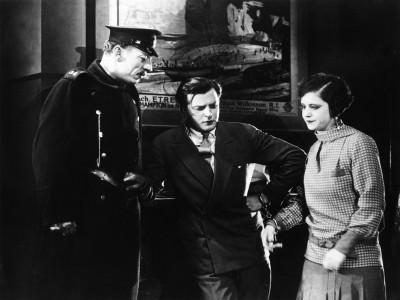 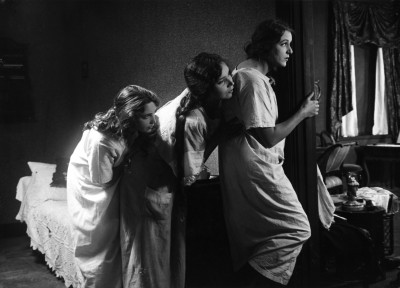 There were a couple of films that the festival restored that had their North American premier. The first was 1913's When the Earth Trembled an early feature from the Lubin Company. Running three reels, it was significantly longer than most of the shorts being released at the time and took an incredible five weeks to shoot. (This was at a time when Lubin was filming five one-reelers each week... five weeks was an eternity!) To make sure people went to the film, they everything in this film to make it a huge spectacle. The high point is the recreation of the SF Earthquake, which includes film of the actual aftermath of the quake. It was interesting to see how the creators handled some of the problems that accompany longer films, such as denoting the passage of time. For that particular difficult, they just added intertitles: "2 months later," "5 years later," etc. It was a lot of fun. The highlight to this year's festival was presentation of the newly discovered and restored Sherlock Holmes (1916). This film is a Holy Grail for Holmes fans and the 1400+ seat Castro sold out for the show. It stars William Gillette, and is based on the hit stage play that he also wrote. Gillette had been playing the famous detective in his play for nearly 17 years when this film adaptation was made. To most people, Gillette WAS Sherlock Holmes. His costume and manner were so closely associated with the character that Frederic Dorr Steel, who illustrated the original Sir Arthur Conan Doyle's Holmes stories in The Strand magazine, used aspects of Gillette's appearance in his now famous drawings. Now this person who personified Sherlock Holmes for a generation can finally be seen in his defining role. 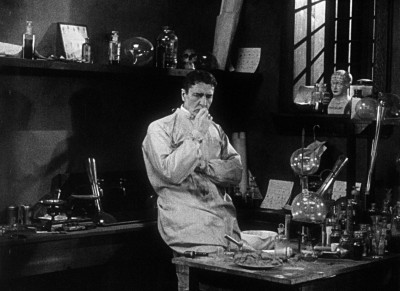 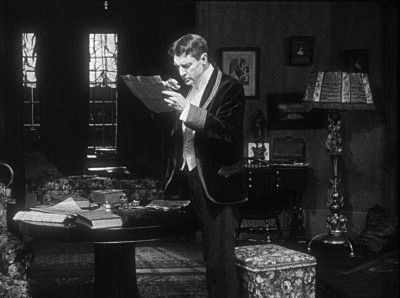 After watching this, it's easy to see why Gillette was such a popular Holmes. He is excellent. He really owns the character, giving him a perfect combination of intelligence, confidence, and ease. Many of the other actors were with Gillette in the play, and they're very familiar with their roles too. As for the story itself, revolving around Holmes attempts to locate some love letters that incriminate a powerful person in an affair, is very good. My only regret is that it sound wasn't around at that time, as there is something lost without Sherlock's precise observations being rattled off, and his catch phrases are missing. The iconic images of the master detective are not however: we get to see Sherlock with his violin, in the deerstalker cap, and even in an ingenious disguise. Fans of the character should make sure to get a copy when Flicker Alley releases it this October. There were several special presentations this year too, things that you won't be able to experience on home video, or even other venues. One yearly tradition is the "Amazing Tales from the Archives" where film archivists present their latest finds and discuss the intricacies of restoring old films. Rob Byrne, the man who restored both When the Earth Trembled and Sherlock Holmes talked about the latter. It was interesting to hear how the film was discovered and the challenges of bringing the picture back to the screen. Bryony Dixon from the BFI shared footage of the RMS Lusitania and talked about the sinking of the ship and the public's reaction. The show was capped off by Serge Bromberg from Lobster films, who gave a very entertaining and energetic talk about the trials and tribulations of involved in the acquisition of a large film collection that ultimately took years. Another very interesting presentation was the screening of Frank Capra's early film The Donovan Affair. Those who are really up on their Capra films may recall that this is a "100% all-dialogue picture" as the advertising copy proclaimed. It used a sound-on-disc system though, and all of the discs are lost (along with the script), though a print of the film still exists. Using censor records along with some lip reading (and just filling in the blanks when necessary) Bruce Goldstein of New York's Film Forum has recreated the script. (No little feat since some of the movie takes place in the dark!) So with the help of several actors reading their parts live (as well as sound effects) film buffs can now experience this 'accidental silent' once again. I'm really glad I was able to attend, as it has only been performed a handful of times. The film was a minor how-dun-it comedy and the overall effect was nice. There was also a presentation on the last day of the festival by Ron Magliozzi from MoMA about an all-black cast film that was discovered unedited featuring Bert Williams. He gave a detailed talk about the actors who appear in the film, the state of black entertainers when the film was made, and possible reasons why it was never completed. That was followed by an hour's worth of the film that still exists. Sometimes multiple takes were included and the film was not edited together to try to tell a story since a script does not exist. It was a very interesting look at a forgotten part of American entertainment. 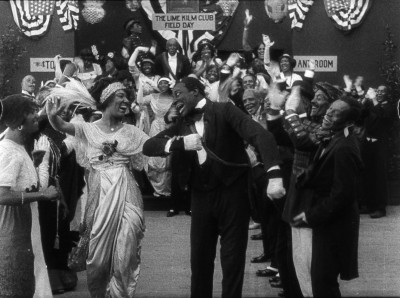 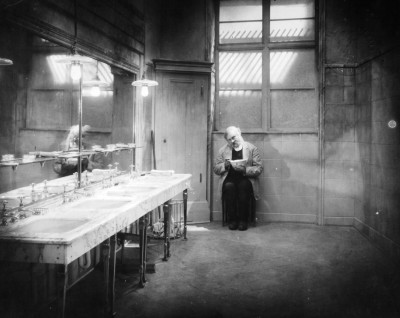 I want to close with a word on the music that was presented. All of the films (with one exception) were accompanied by live music by some very talented performers. My very favorite ensemble for silent film scores is The Mont Alto Motion Picture Orchestra. They always do a tremendous job and that brings the audience to their feet at the end more often than not. Pianist extraordinaire Stephen Horne was at the festival once again, and though his soundtracks are impressive on DVD and Blu-ray you really need to see him live to get the whole effect. He plays multiple instruments at the same time and the results are extraordinary. Another pianist who I really enjoy is Guenter Buchwald. His skill is impressive and the scores he creates are really wonderful. The highlight of this festival, as far as music goes, was the surprising performance by the Berklee Silent Film Orchestra. The famous music school has a degree in film composition, and one of the classes that students can take is on scoring silent movies. This semester, the students created a score to The Last Laugh, F. W. Murnau's magnificent film of a door man at a swank hotel in Berlin and what happens to him when he starts getting old. It's always been a favorite of mine, but I had a sinking feeling when the professor introduced the film. He described how they came up with the music they were going to play: in the class they work out some musical themes, and then every student receives one reel to score. During the performance the student who wrote the score for that reel would conduct, so they'd be switching off several times during the course of the film. He did say that it was a collaborative effort, but it sounded like a recipe for disaster. As the theater darkened and the curtains opened on the screen, I braced myself for the worst. What they presented was amazing. Not only did the score accent the action on the screen wonderfully, but the musicians in the orchestra played with feeling and energy. The music was interesting, it made the emotions being shown of the screen more intense, and was just a joy to listen to them play. I was not the only one who felt that way either. At the end of the movie the orchestra received one of the longest standing ovations that I've seen at the SFSFF and for the rest of the weekend people were discussing how much impressed they were with the group. If you are in the Boston area, try to catch these guys some time, you'll be glad you did. While the dates for next year's festival have not been announced yet, there will be a "Day of Silence" mini-program in December. Check out their web site for the latest information. I can't wait to see what they have in store for 2016.
Archives
The 5 Most Influential Summer Blockbusters
Los Angeles Comic-Con Cosplay Spotlight Notes from Book Expo DVD Talk Interview: Batman: Return of the Caped Crusaders Compete Archives
Review Staff
| Newsletter Subscribe
| Join DVD Talk Forum
|
| |||||||||
| |||||||||||